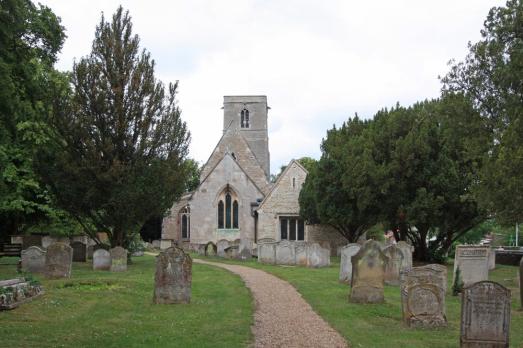The oldest parts of the church building are the 13th century nave arches, although it is probable that a much earlier building stood on the site.The vestry was originally a chapel built by John de Stilton in around 1338.
Most of the church was rebuilt in the 15th century, but the south porch and vestry are mostly c1500 AD. The chancel and vestry were rebuilt in 1808, the vestry being shortened in the process. A gallery at the western end was removed during restoration in 1857 and the South Aisle was partially rebuilt in 1908. The chancel and nave are noticeably misaligned (see photo below), suggesting that they were not built at the same time.
The external appearance has also changed over time. The reason for the steep roof pitch is that it was once a Collyweston roof, which are traditionally steep (see for example the roof of the Bell Inn.) The 15th century tower once had a squat pyramidal spire, clearly shown in a 17th century illustration, but which had disappeared by 1885.
The surrounding churchyard contains many memorials to former villagers. The most notable of these, at the end of the chancel, is the grave of Cooper Thornhill, the former landlord of the Bell Inn who made Stilton cheese famous. In 2009 a new headstone was added to the original, badly eroded, slab tombstone. Much of this wear had apparently been caused by generations of Stilton youngsters sliding across it in their hob nailed shoes!
Among other interesting memorials can be found the grave of Jean Habert. A former officer PoW at the Norman Cross depot, he returned after the Napoleonic War to marry a local girl and worked as a baker. Sadly, he was murdered and robbed on his way home from selling his wares in Peterborough; his murderers were never caught.



